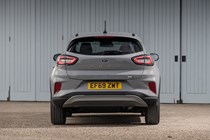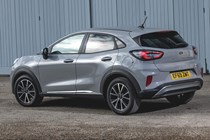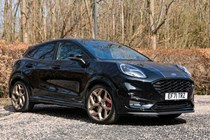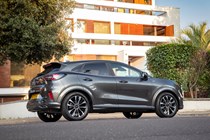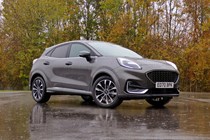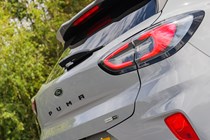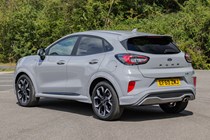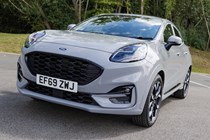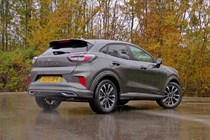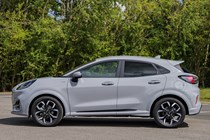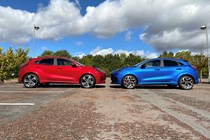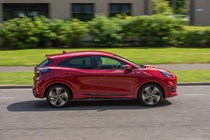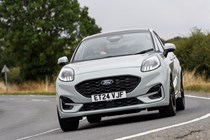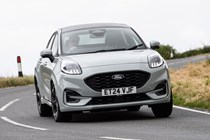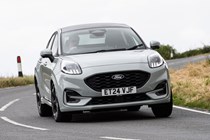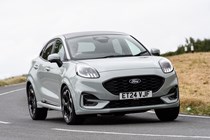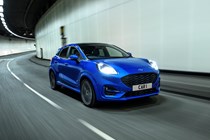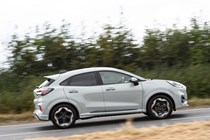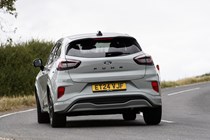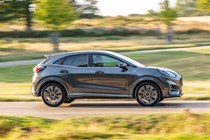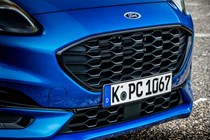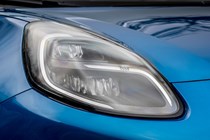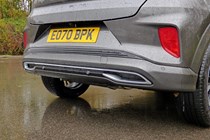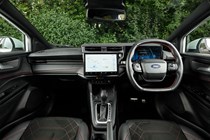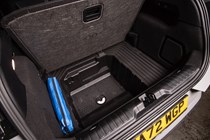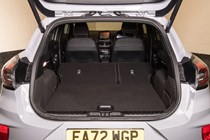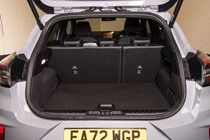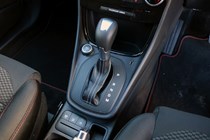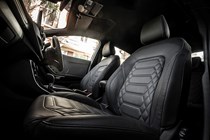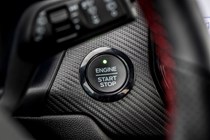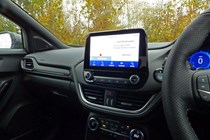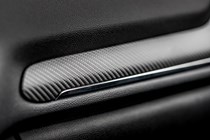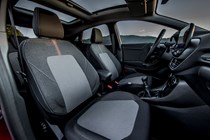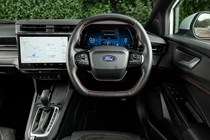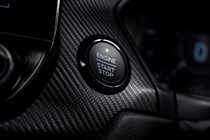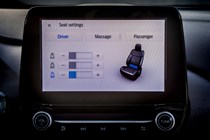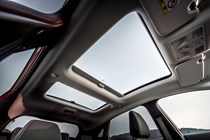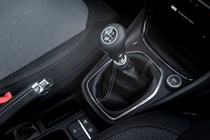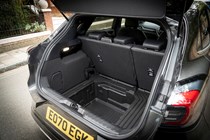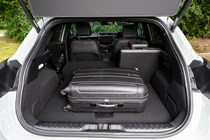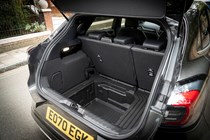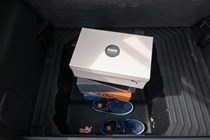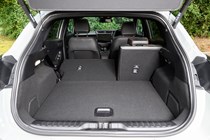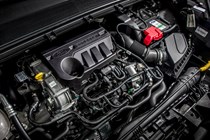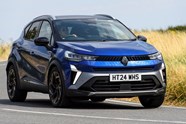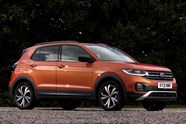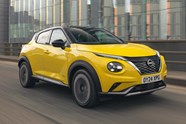Ford Puma review
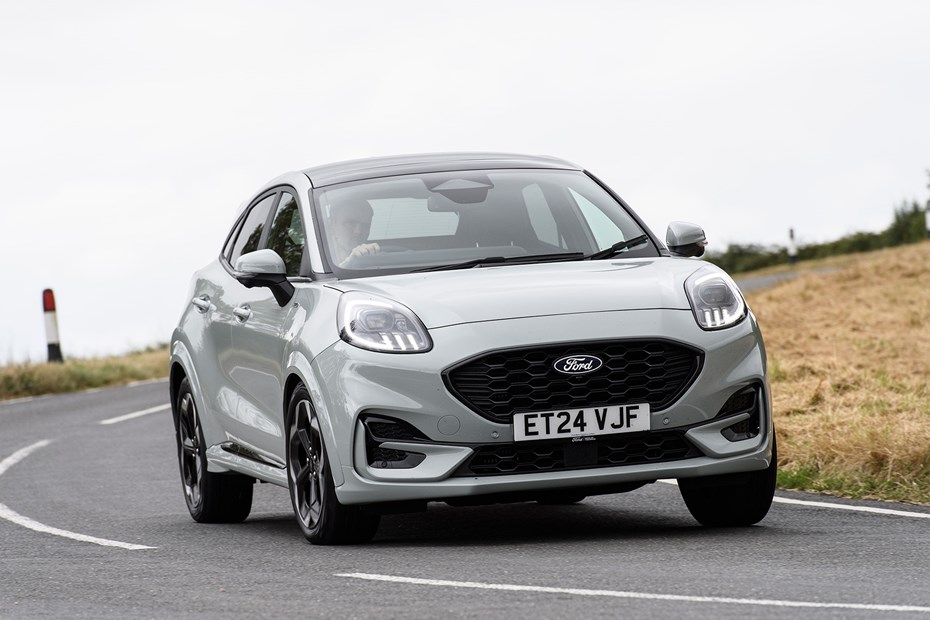
At a glance
| Price new | £26,580 - £33,425 |
|---|---|
| Used prices | £8,484 - £26,040 |
| Road tax cost | £195 |
| Insurance group | 11 - 18 |
Get an insurance quote with

|
|
| Fuel economy | 45.6 - 52.3 mpg |
| Range | 545 - 582 miles |
| Miles per pound | 6.7 - 7.7 |
| Number of doors | 5 |
| View full specs for a specific version | |
Available fuel types
Petrol
Pros & cons
- It's the best driving small SUV
- Fun and frugal petrol engines
- Huge boot thanks to Ford’s Megabox
- Rear legroom could be better
- Dashboard is a little bland
- Infotainment looks dated
Ford Puma SUV rivals
Overview
Now the Fiesta supermini is dead, the Ford Puma has stepped into the spotlight as the brand’s only small, fun and cheap (-ish) compact car. The two cars share the same platform, plus the Puma can be spec’d with the same 1.0-litre engines that once belonged to the Fiesta.
However, because the Puma is a small SUV rather than a supermini, it has a bigger boot, a taller ride height and a bit more cabin space, thus making it a more natural family car. Mercifully, Ford hasn’t massaged all the Fiesta’s character out, either. You still get the same sharp-shifting manual gearbox, the same well-weighted pedal box and a suspension setup that savours twisty backroads.
It’s not all good news, though. Ford updated the Puma in 2024 and it’s now far worse to live with. The cabin is the biggest step backwards, as the design is drab, the new infotainment system now takes the place of the previous car’s physical heater controls and you now get the same sort of square steering wheel you’ll find in the latest Transit van, which feels far too big for the Puma’s cabin. It’s also no help to the Puma that the small SUV segment is now rich with some very strong competition, with cars such as the Skoda Kamiq and Renault Captur all vying for your attention.
The standard Puma is offered with a choice of two engines. They’re both turbocharged 1.0-litre three-cylinder petrol units – the basic model has 125hp, while the more potent variant serves up 155hp. Both are mated to a six-speed manual gearbox as standard, although you can have a seven-speed automatic as an optional extra (which we’d strongly suggest you avoid). If you’re a speed freak, Ford also sells a Puma ST, which we’ve covered in a separate review. Alternatively, if you’re the eco-conscious sort, you can now buy a pure-electric version of the car, called the Puma Gen-E.
There are three specifications to choose from called Titanium, ST-Line and ST-Line X. The Titanium model features 17-inch alloy wheels, automatic headlights, rain-sensing windscreen wipers and a 12-inch infotainment system. You also get a good range of standard safety equipment, including rear parking sensors, cruise control and lane-keeping assist.
ST-Line cars get a more aggressive body kit, a unique set of 17-inch alloy wheels, lower sports suspension, sports seats and an electric folding mirrors. ST-Line X models build on that specification with 18-inch alloy wheels, half-leather seats and a wireless smartphone charger. The previous Vignale trim was discontinued as part of the 2024 update.
Over the next few pages, we’ll review each aspect of the Ford Puma. We’ll consider its practicality, interior quality, driving experience and running costs before offering our final verdict on the car. If you’d like to find out how we reached our verdict on the Ford Puma, head over to our how we test cars to find out everything you need to know.



